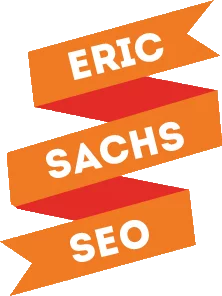Consistently coming up with engaging and unique blog post ideas can be a struggle, especially when it feels like you have covered everything. with millions of blogs across the internet covering nearly any topic you can imagine, it doesn’t seem like anything is unique anymore.
So, how can you write fresh, search engine optimized content that is interesting enough that your audience actually wants to read it?
If you are overwhelmed with the idea I was coming up with more ideas, don’t worry. There are a number of ways you can come up with unique Burger ideas without relying solely on your own creativity.
Writer’s block is universal so even the world’s most well-renowned writers and content creators have come up with their own shortcuts for developing topics on a whim. In this guide, I’ll share with you a variety of ways to come up with blog post ideas so you don’t have to stare at a computer screen for hours to come up empty-handed.
Round Up Posts
This can be done in multiple ways. You can write around up post of your favorite industry quotes, or reach out to experts or influencers in your industry to get them to answer the same question. This will provide multiple inside around a single topic that you can then used to create additional blog posts later.
Year in Review Posts
We are quickly approaching the end of 2019. This is fairly monumental as we reach the end of a decade. As the year comes to a close, consider the lessons you’ve learned. What kinds of Trends should your audience look out for in the next year? what can your readers take away from what you’ve learned over the past year?
If your business has been around since before 2009, you can also do a decade in review post and link back to some of your most popular posts over the past few years. Plus, year-in-review posts have the added benefit of being able to Target New Year’s related keywords to get an annual traffic boost.
Answer the Public
You’ve heard me sing praises for Answer the Public in many of my blog posts. It is a free visual keyword research tool that gives you an expensive list of questions related to any Focus topic. Each of these questions could be something your audience is looking for and therefore could serve as the basis for a number of interesting blog posts.
Quora
Quora is a question-and-answer forum where people can post their questions about nearly anything you can imagine. Community members provide answers. Responding to Quora question is commonly used to build backlinks but you can also use these questions for blog post ideas. If you see the same few industry-related questions coming up again and again, it may be time to cover the topic on your own blog.
Once you do, you can return to each of those questions and provide a short answer with the link to your blog post included. This not only helps the people asking the questions get the answers they need but can also help increase traffic to your site.
Facebook Groups
If you thought of it, chances are there’s a Facebook Group built around it. Many Facebook groups consist of hundreds of thousands of members so there is no shortage of people to connect with and learn from. Take time to join industry-related groups and you can learn about the questions that people have or ask them what they would like to know about your chosen topic. Using the feedback from the group members allows you to come up with blog posts you know people will want to read
Resource Posts
Compile resource post that features your favorite industry videos, e-books, tools and more. Your readers are most likely looking for the best resources to help them grow their businesses and improve their lives. These posts are also a great way to earn commission through including affiliate links. However, if you make use of affiliate links be sure to include the appropriate FTC required disclosure.
Industry Event Overviews
Were you part of a local event there would be of interest to your audience? Did you attend a conference?
Write a blog post that shares your experiences and the things you learned on your blog. Chances are there are many people in your audience who would have loved to attend the event but were unable. Through your blog post, they can still get value by reading about what you learned. Plus, if people are searching for information about the event, you may be able to take advantage of that traffic.
A visual social network once thought only to be valuable to those in the cooking or lifestyle niche, Pinterest can be much more than a bunch of projects you’ll never get around to doing. Take a look at the trending ideas section to find trending topics, or start your search with a keyword to see what comes up.
Your results will include a mixture of images, videos, and blog posts. With it, you can learn about what other brands are posting and think of some blog post ideas on your own. Even if you take something from Pinterest for inspiration, you can find a way to add your own spin to it by including your personal perspective or adding other information the original blog post did not include.
Audience Surveys
Though this approach doesn’t work very well for new blogs that don’t have an established readership, audience surveys are a wonderful way to connect with your subscribers and loyal readers. You can create a quick survey with Google Forms to ask your audience what they are most interested in reading about. This way, you’ll come up with topics they are definitely interested in, but they are likely to be topics people search for, too.
